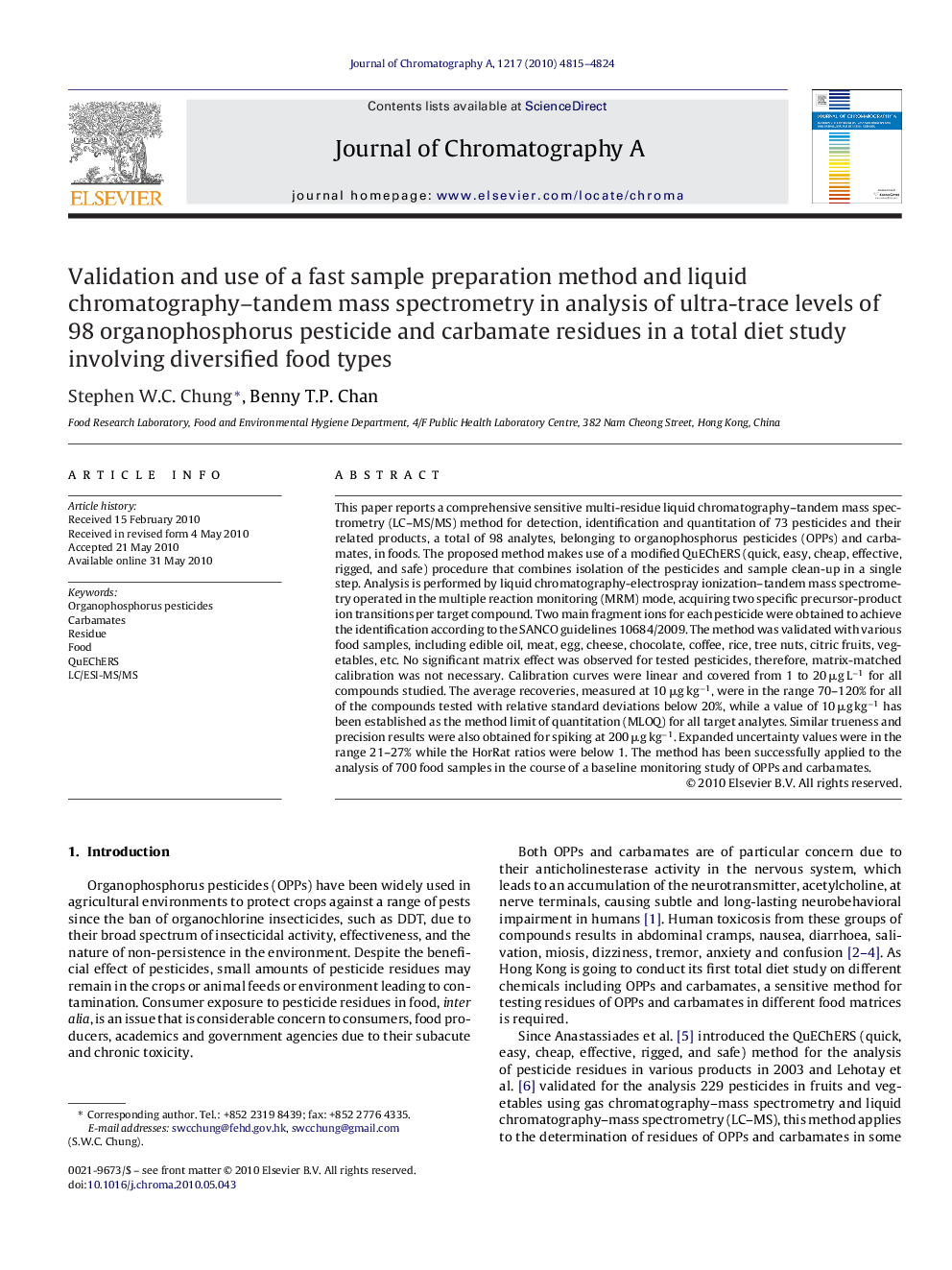| کد مقاله | کد نشریه | سال انتشار | مقاله انگلیسی | نسخه تمام متن |
|---|---|---|---|---|
| 1203119 | 965099 | 2010 | 10 صفحه PDF | دانلود رایگان |

This paper reports a comprehensive sensitive multi-residue liquid chromatography–tandem mass spectrometry (LC–MS/MS) method for detection, identification and quantitation of 73 pesticides and their related products, a total of 98 analytes, belonging to organophosphorus pesticides (OPPs) and carbamates, in foods. The proposed method makes use of a modified QuEChERS (quick, easy, cheap, effective, rigged, and safe) procedure that combines isolation of the pesticides and sample clean-up in a single step. Analysis is performed by liquid chromatography-electrospray ionization–tandem mass spectrometry operated in the multiple reaction monitoring (MRM) mode, acquiring two specific precursor-product ion transitions per target compound. Two main fragment ions for each pesticide were obtained to achieve the identification according to the SANCO guidelines 10684/2009. The method was validated with various food samples, including edible oil, meat, egg, cheese, chocolate, coffee, rice, tree nuts, citric fruits, vegetables, etc. No significant matrix effect was observed for tested pesticides, therefore, matrix-matched calibration was not necessary. Calibration curves were linear and covered from 1 to 20 μg L−1 for all compounds studied. The average recoveries, measured at 10 μg kg−1, were in the range 70–120% for all of the compounds tested with relative standard deviations below 20%, while a value of 10 μg kg−1 has been established as the method limit of quantitation (MLOQ) for all target analytes. Similar trueness and precision results were also obtained for spiking at 200 μg kg−1. Expanded uncertainty values were in the range 21–27% while the HorRat ratios were below 1. The method has been successfully applied to the analysis of 700 food samples in the course of a baseline monitoring study of OPPs and carbamates.
Journal: Journal of Chromatography A - Volume 1217, Issue 29, 16 July 2010, Pages 4815–4824